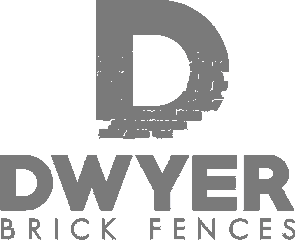
AI has already transformed how we create content, engage with customers, and analyse performance. Now it’s reshaping the very core of paid search advertising, particularly in Google Ads.
From automated bidding strategies to AI-generated ad creatives, the role of machine learning in paid campaigns is no longer optional. It’s built into the platform. While these changes promise improved performance and streamlined workflows, they also challenge marketers to rethink how they plan, optimise, and report on campaigns.
Here’s what’s changed, what’s on the horizon, and how marketers are adapting in a landscape driven by automation.
What’s Already Changed: Automation Is Now the Default
If you’ve managed a Google Ads account in recent years, you’ve probably noticed how much control has shifted away from manual inputs to automated, AI-powered decisions.
1. Smart Bidding
AI-powered bidding strategies now dominate Google Ads. Whether you’re optimising for conversions, conversion value, or return on ad spend (ROAS), smart bidding uses historical data and machine learning to set bids in real time. Manual CPC is still available but rarely recommended.
2. Responsive Search Ads (RSAs)
Google’s default ad type for search campaigns, RSAs mix and match headlines and descriptions using AI to find the most effective combinations. This improves performance but makes it harder for marketers to know exactly which copy was responsible for a win or loss.
3. Performance Max Campaigns
Performance Max (PMax) is Google’s most automated campaign type yet. You provide creative assets, goals, and audience signals and Google handles the rest across Search, Display, YouTube, Gmail, and Maps. Whilst it promises reach and efficiency, it also limits transparency.
4. Reduced Keyword Control
Exact match isn’t what it used to be. Broad match, once considered risky, is now more refined thanks to AI. Google’s machine learning predicts user intent and serves your ads to a wider pool of queries. While this can improve reach, it also introduces noise and requires trust in the algorithm.
5. AI-Powered Asset Generation
Google now suggests and increasingly creates ad headlines, descriptions, and visuals using generative AI. These features save time, but they also blur the line between automation and strategy.
What’s Coming: AI-First Paid Advertising
AI is not just a layer on top of paid search, it’s becoming the engine that powers it.
1. Conversational Campaign Building
Google has rolled out an experimental chatbot-style campaign builder. You describe your business and goals in natural language, and the AI generates a campaign structure, ad copy, and audience recommendations. For beginners, this removes friction. For experts, it raises questions about control and consistency.
2. AI-Generated Visuals and Video
Expect AI to play a larger role in ad creatives. Google is experimenting with generating product images, backgrounds, and even short video ads using generative models. This opens creative possibilities but also risks homogenisation.
3. Predictive Insights and Alerts
Machine learning is improving how advertisers detect anomalies, project performance, and spot opportunities. Soon, your dashboard may flag trends before you do — but understanding the “why” will still require human input.
4. SERP Integration with AI Overviews
As Google rolls out AI Overviews in search results, ad placement dynamics will shift. Paid ads may appear above or below generative summaries, meaning messaging must align with what users have already read or risk being ignored.
Challenges for Marketers
While AI introduces efficiency, it also creates new challenges:
- Loss of visibility: With Performance Max and RSAs, it’s harder to see which keywords or creatives are working.
- Less control over targeting: AI determines who sees your ads, when, and on what platform.
- Data limitations: Search term reports and audience insights have been scaled back, making it harder to validate assumptions.
- Homogenised messaging: If everyone uses the same AI tools, creative differentiation becomes more difficult.
How Marketers Are Adapting
To stay effective in an AI-first paid search environment, marketers are shifting their focus from platform mechanics to strategic oversight and creative testing.
1. Leveraging First-Party Data
As cookie-based targeting declines, advertisers are turning to first-party data like email lists, CRM integrations, and customer intent signals to feed Google’s machine learning with richer context.
2. Creative as a Competitive Advantage
With automation doing the heavy lifting, marketers are pouring more effort into strong creative messaging. Headlines, offers, and visuals must stand out and stay consistent with the brand’s tone.
3. Testing and Learning Differently
Traditional A/B testing is less effective in AI-driven platforms. Marketers are now using incrementality testing or geo-split experiments to understand the impact of ads across channels and campaigns.
4. Better Integration Between Ads and Site Experience
AI can drive traffic, but the landing page still needs to convert. Smart marketers are using CRO, personalisation, and better messaging alignment to maximise value from every click.
5. Keeping Strategy Human
Automation doesn’t remove the need for strategic thinking. It changes the marketer’s role from executor to overseer. Asking the right questions, interpreting machine-generated insights, and aligning campaigns with business objectives remains a human task.
Final Thoughts: AI Is Not Replacing You, It’s Replacing the Way You Work
The future of paid search is no longer manual, keyword-by-keyword optimisation. It’s about guiding AI systems with the right signals, strong creative assets, and clear strategic direction.
For businesses, this means trusting your digital partner not just to manage your campaigns but to interpret, adjust, and align them with your growth goals.
At Dizian Digital, we help clients make sense of Google’s evolving ad platform. Whether you’re navigating Performance Max, trying to decode smart bidding, or want to ensure your creative cuts through, we’ll help you get the best out of your ad spend.
Want to Future-Proof Your Google Ads Strategy?
AI is changing the rules - but not the goal. You still need results. Book a strategy session with Dizian Digital today and learn how we combine automation with insight to keep your campaigns ahead of the curve.














.png)
.png)




.svg)
.png)











